Activities - Benjamin-Mills
Activities - Benjamin-Mills
Activities - Benjamin-Mills
You also want an ePaper? Increase the reach of your titles
YUMPU automatically turns print PDFs into web optimized ePapers that Google loves.
WHICH PRODUCT SHOULD A PHARMACEUTICAL COMPANY DEVELOP?WM8Initial technological and economic appraisalTechnical information on compound AP1011This compound has antipyretic (fever-reducing) and analgesic (pain-relieving)properties and so may be suitable for conditions such as toothache, headache,neuralgia, sciatica, period pains and pains in ligaments, muscles and joints. It alsoreduces swelling and pain in arthritis and rheumatic fever. There is some evidencethat it may inhibit blood-clotting.Preparation and stability AP1011 may be synthesised simply in two stages, bothwith high yield, from readily available and cheap raw materials. It seems likely thatscaling-up of this synthesis will present no major problems. Estimated cost oflarge-scale production is approximately 20p per 100 g. AP1011 has already beenshown to be stable in dry conditions for over two years.It must be administered by mouth and can be formulated into tablets or as powderfor dispersal in water.Action AP1011 is a drug precursor in that it is hydrolysed in the stomach andsmall intestine to form an active metabolite which is absorbed through theintestinal wall into the bloodstream.Indications from preliminary trials No major side-effects have been found. Thereis no evidence of carcinogenic effects. The compound may produce stomachirritation and causes nausea, vomiting and/or stomach bleeding in a few cases.Overdose can lead to a number of symptoms, including confusion and respiratoryproblems.The LD 50is estimated to be 1750 mg/kg of body weight.** The toxicity of a compound is tested by finding the dose which will kill 50% of atrial group of animals (usually rats). The dose is measured in terms of thenumber of milligrams of compound per kilogram of body weight of the animal.Initial technological and economic appraisalTechnical information on compound H2202This compound has mild sedative and hypnotic (sleep-inducing) effects and couldthus fill the gap between mild pain-relieving sedatives like paracetamol and thebenzodiazepines like Valium and Mogadon, which can be addictive with prolongeduse.Preparation and stability Synthesis is by a two-stage process from benzene-1,2-dicarboxylic acid and glutamic acid. Both are currently manufactured asintermediates in the production of other compounds. Scaling-up is likely to bemoderately complex and the predicted cost is about £7.00 per 100 g.The compound should be taken by mouth and can be made up into tablets. It isstable in storage.Action H2202 is hydrolysed by the body reforming benzene-1,2-dicarboxylic acid,glutamic acid and ammonia.Indications from preliminary trials Side-effects are almost nil. H2202 shows notoxic effects (even on fairly extreme overdose), and does not affect the liver orkidneys.Prolonged high dosage can lead to slight disturbance of the nervous system, butthis is reversed on reduction of the dose.The LD 50is estimated to be 5000 mg/kg of body weight.** The toxicity of a compound is tested by finding the dose which will kill 50% of atrial group of animals (usually rats). The dose is measured in terms of thenumber of milligrams of compound per kilogram of body weight of the animal.AS LEVEL„ Salters Advanced Chemistry 2000 – see Copyright restrictions153




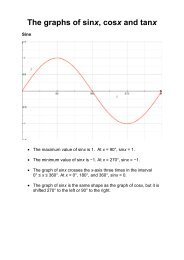

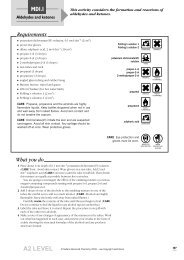
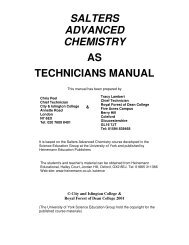



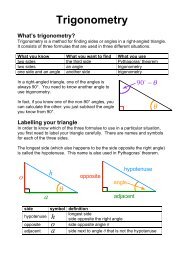
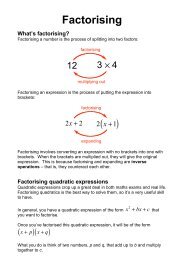
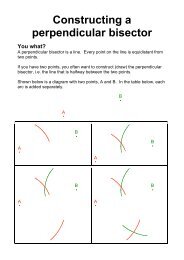


![ISI Web of Knowledge [v.4.10] - All Databases Results - Benjamin-Mills](https://img.yumpu.com/39253071/1/184x260/isi-web-of-knowledge-v410-all-databases-results-benjamin-mills.jpg?quality=85)